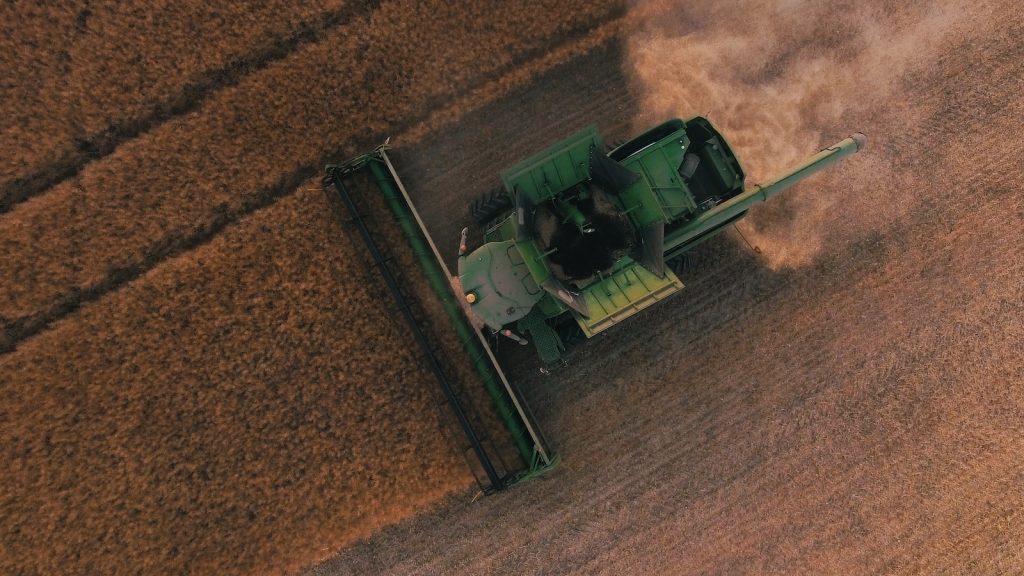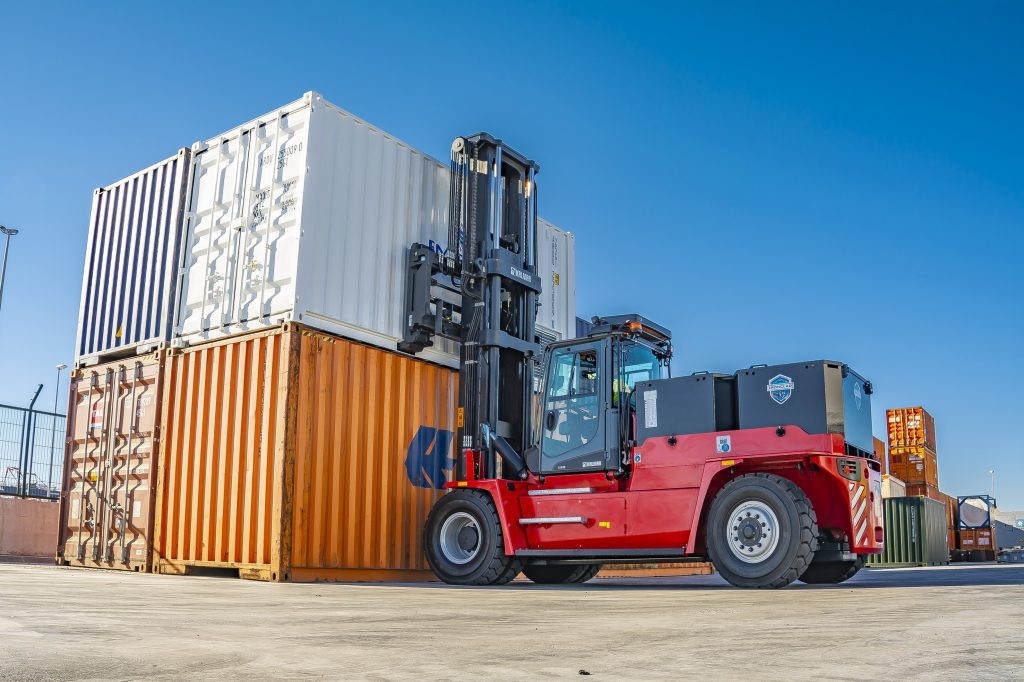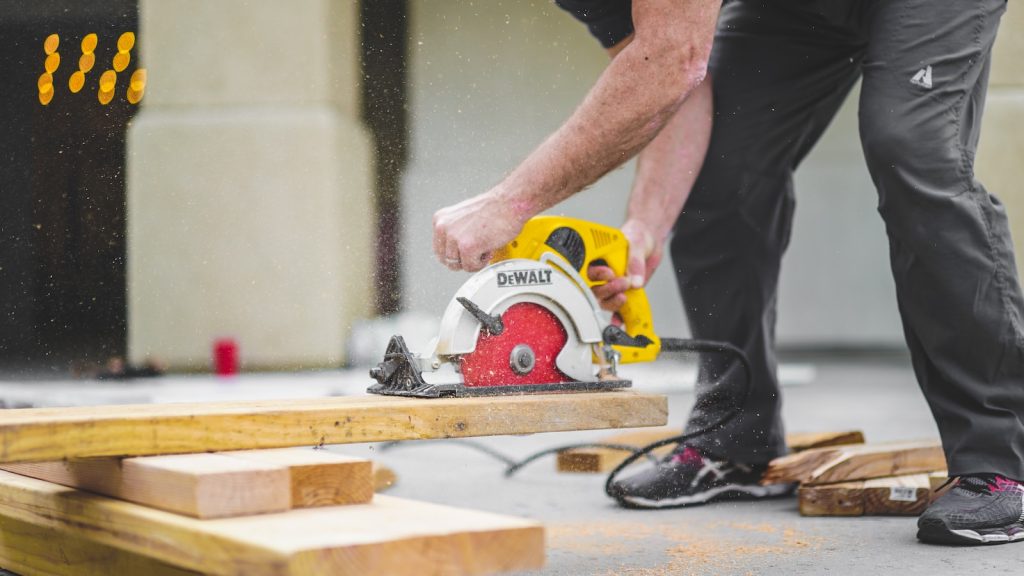As a professional in the construction field, you know the importance of staying informed about the latest advancements in construction equipment technology. These innovative solutions, like automation and the Internet of Things, help you stay ahead of the competition and provide more efficient and safer services on the job site to your clients. In this article, we dive into the many ways new technology in construction is transforming the industry, from autonomous and electric heavy machinery to AI and machine learning applications that boost productivity and safety on the job site.
Key Takeaways
- New advancements in construction equipment technology, such as autonomous and electric machinery, are significantly improving project efficiency and worker safety.
- Heavy machinery developments, like concrete crushers and embedded GPS capabilities, have streamlined operations while reducing waste and pollution.
- Electric construction vehicles are contributing to a reduced carbon footprint and lowered operational expenses, despite potential performance challenges in cold climates.
- AI and machine learning, integrated into equipment operations, enable autonomous high-precision tasks, increasing production efficiency and job site safety.
- Built-in safety measures, data and analytics, and theft-prevention technologies are increasingly important for reducing overall risk and liability on construction sites.
- Telematics and remote control capabilities are expanding the possibilities for efficient machinery management and enhanced equipment utilization in the construction industry.
The Latest in Heavy Machinery Advancements

Advancements in heavy machinery are revolutionizing the construction industry by reducing manual labor, accelerating project timelines, and improving safety conditions. Cutting-edge innovations in construction equipment technology are transforming traditional processes and enhancing the capabilities of heavy equipment across various applications.
Concrete Crushers and Removal Equipment
New types of concrete crushers and removal equipment, such as impact crushers with dust suppression systems, have emerged, significantly reducing waste and pollution while enabling on-site recycling. These advancements lead to less downtime, reduced transportation costs, and lowered material demand, ultimately benefiting the environment and driving greater profitability for contractors.
Advancements in Trench Digging Technology
The introduction of mini-excavators to trench-digging technology has revolutionized excavation work in tight spaces where manual labor was once the only solution. Mini-excavators not only reduce the necessity to place workers in hazardous spots but also increase the overall efficiency and effectiveness of excavation projects.
Embedded GPS for Improved Asset Tracking
GPS technology embedded in construction equipment allows for precision tracking of expensive assets, potentially decreasing theft rates and assisting in achieving exact grading faster. This innovation boosts productivity while reducing property risk and enabling contractors to better manage their resources and equipment.
| Equipment Type | Key Tecnological Advancement | Potential Benefits |
|---|---|---|
| Concrete Crushers | Dust Suppression Systems | Reduced waste, pollution, and transportation costs |
| Mini-Excavators | Compact Size | Increased efficiency in tight spaces, improved worker safety |
| GPS-Enabled Construction Equipment | Asset Tracking and Precision Grading | Decreased theft, enhanced productivity, and resource management |
The Rise of Autonomous and Electric Construction Equipment

The construction industry is witnessing the rise of autonomous and electric (EV) construction equipment, marking a new chapter in construction technology. Leading equipment manufacturers like Caterpillar and John Deere have begun mainstreaming automated and driverless technologies in new models, while tech companies such as Built Robotics and SafeAI are retrofitting existing machinery with autonomous capabilities.
These advancements are drawing the attention of construction companies and contractors due to the potential for heightened safety, as automated equipment removes humans from high-risk tasks and diminishes the element of human error— a common cause of job site accidents. Furthermore, autonomous technology in construction is expected to impact several aspects of the industry:
- Increased safety
- Improved productivity
- Reduced operational costs
- Enhanced environmental sustainability
A variety of autonomous and electric construction equipment is anticipated to become more widely available in the coming years. By 2023, experts predict that the market for such machinery will grow considerably, transforming job sites and the way construction projects are executed.
“New technologies in construction equipment will continue to play a pivotal role in advancing the efficiency and productivity of the construction industry.”
The following table highlights some notable examples of autonomous and electric construction equipment in development or currently available:
| Equipment Type | Manufacturer | Model/Project | Features |
|---|---|---|---|
| Electric Excavator | Volvo Construction Equipment | Volvo ECR25 | Compact size, zero emissions, quiet operation, remote-controlled |
| Autonomous Wheel Loader | Caterpillar | CAT 906M | GPS and LiDAR technology, object detection and collision avoidance |
| Electric Loader | John Deere | 310L EP | Electric motor, reduced noise, lower maintenance costs, zero emissions |
| Autonomous Excavator System | Built Robotics | Built Robotics Excavator | Automated digging and grading, cloud-based remote control, geo-fencing |
To fully reap the benefits of autonomous and electric construction equipment, contractors and construction companies must not only invest in acquiring the machinery but also in training their workforce to adapt to these new technologies. Ultimately, those who embrace these innovations will be better positioned to succeed in an increasingly competitive and technologically driven construction landscape.
Reducing Carbon Footprint with Electric Construction Vehicles

Electric construction vehicles are quickly becoming popular in the industry, mainly due to their ability to significantly decrease exhaust emissions and reduce reliance on fossil fuels. Aside from their environmental advantages, these electric vehicles can also offer financial savings through reduced operational costs, particularly amid rising fuel prices. Lower maintenance costs associated with lithium-ion batteries and electric motors add to the overall savings. However, some challenges arise from the inherent limitations of EV technology, such as performance issues in cold climates and the downtime required for charging batteries.
Fuel and Maintenance Cost Reduction with EVs
The shift to electric construction vehicles offers a potential solution to combat the continuously fluctuating fuel prices. By utilizing electric motors and lithium-ion batteries, these vehicles can achieve significant cost reductions in terms of fuel consumption and maintenance expenses. The absence of numerous mechanical components, such as engines and transmissions, results in fewer instances of wear and tear, ultimately leading to a lower overall cost of ownership.
Cold Weather Limitations and Battery Performance
While electric construction vehicles present numerous benefits, their performance can be affected by cold weather conditions. Low temperatures can reduce the range and efficiency of lithium-ion batteries, causing a drop in overall performance. Moreover, the time required to recharge these batteries can introduce downtime into projects, potentially impacting strict timelines. As EV technology continues to advance, tackling these challenges is vital for ensuring the wide-scale adoption of electric construction vehicles in the industry.
Integration of AI and Machine Learning in Equipment Operations

The world of construction is witnessing a rapid integration of artificial intelligence (AI) and machine learning within equipment operations. These cutting-edge technologies are enabling heavy machinery, such as excavators, loaders, and wheel loaders, to perform tasks with increased autonomy and precision. This is significantly impacting the way new technology is being adopted within the construction industry.
By leveraging advanced tools like cameras, GPS, geo-fences, and various sensors, construction equipment is being equipped to operate independently, significantly increasing efficiency across job sites. For instance, the use of AI and machine learning technology enables machinery to autonomously and precisely dig trenches, reducing the need for direct human intervention.
An impressive track record of zero safety incidents over more than 18,000 hours of operation demonstrates the promising potential of AI and machine learning in construction equipment technology. These advanced technologies not only streamline production processes but also contribute to creating safer working environments for construction professionals around the globe.
In summary, the integration of AI and machine learning in equipment operations is revolutionizing the construction industry. As more heavy machinery becomes equipped with artificial intelligence capabilities, the potential impact on efficiency, safety, and productivity is immense. Businesses need to stay updated with the latest advancements to maintain a competitive edge in this ever-changing landscape.
Built-in Safety Measures for Modern Construction Equipment

With the construction industry being one of the most dangerous fields, the implementation of built-in safety technology plays a crucial role in mitigating risks and ensuring the well-being of workers. By incorporating systems such as in-cab monitoring and proximity detection, modern construction equipment contributes to a safer work environment and reduces the likelihood of accidents and equipment damage.
In-cab Monitoring and Operator Safety
In-cab monitoring systems have emerged as an essential safety feature in modern construction equipment. These systems track operator alertness and detect distractions or signs of fatigue that may lead to accidents. By quickly identifying instances of operator inattention or drowsiness, in-cab monitoring provides a timely opportunity for intervention, thereby promoting operator safety and reducing the risk of accidents on the work site.
Proximity-Detection and Collision-Avoidance Systems
Equally important for enhancing worker safety are proximity detection and collision avoidance systems. These advanced technologies help operators by alerting them to nearby people or obstacles, significantly reducing the likelihood of accidents and equipment damage. Proximity detection sensors can provide both visual and auditory warnings to operators, while collision avoidance systems can even engage in automatic braking or steering adjustments if necessary, further minimizing on-site hazards.
| Technology | Function | Benefit |
|---|---|---|
| In-cab Monitoring | Tracks operator alertness and detects distractions or fatigue | Improves operator safety and reduces risk of accidents |
| Proximity Detection | Alerts operators to nearby people or obstacles | Minimizes accidents and equipment damage |
| Collision Avoidance | Monitors hazard proximity and engages in automatic adjustments | Enhances worker safety by preventing accidents |
The integration of these built-in safety measures into modern construction equipment greatly increases the overall safety standards of work sites. As a result, workers can be more confident in operating heavy machinery, knowing that state-of-the-art technology is working to ensure their safety and the well-being of their colleagues.
Strategic Use of Data and Analytics in Construction

The construction industry is undergoing a revolution in the way projects are managed and executed thanks to the strategic use of data and analytics. Harnessing the power of big data allows project schedules to be optimized for efficiency, while predictive maintenance features play a significant role in minimizing equipment downtime. This leads to more timely completion of construction projects while also enabling equipment managers to leverage real-time data and analytical insights to make informed decisions that drive operational effectiveness and reduce costs.
Optimizing Project Schedules with Big Data
Big data is transforming the construction industry by providing valuable insights into project schedules and resource allocation. By analyzing large volumes of historic and real-time data from various sources, companies can identify patterns, trends, and areas of improvement to optimize project schedules and streamline processes. Through informed decision-making, companies can efficiently reorganize resource allocation, reduce delays, and increase overall project productivity.
Predictive Maintenance to Minimize Downtime
In addition to optimizing project schedules, predictive maintenance is another crucial aspect of construction analytics. Leveraging data from sensors embedded within construction equipment, predictive maintenance algorithms can identify potential equipment issues before they escalate into major problems. By predicting and addressing equipment failures early on, companies can significantly minimize downtime, maximize equipment utilization, and avoid costly repairs.
In conclusion, the strategic use of data and analytics in the construction industry is proving to be a game-changer in how projects are managed and executed. The integration of big data and predictive maintenance techniques presents companies with the opportunity to optimize project schedules, minimize equipment downtime, and streamline decision-making. As a result, companies can achieve greater operational effectiveness, enhance resource utilization, and ultimately reduce overall costs.
Theft-Prevention Technologies in Construction

With annual losses due to stolen equipment reaching up to $1 billion, theft-prevention technology has become increasingly crucial in the construction industry. Implementing effective job site security measures helps prevent construction theft and safeguard valuable assets from equipment theft. This, in turn, could potentially lead to reduced insurance premiums and lower financial losses.
Some of the key technologies utilized to secure heavy equipment and improve recovery rates include deactivation devices and GPS tracking systems. Deactivation devices are designed to automatically shut down machinery when unauthorized use is detected. This measure ensures operational control and helps deter thieves from targeting the job site.
On the other hand, GPS tracking devices play a pivotal role in locating stolen equipment with utmost precision. These systems not only contribute to swift recovery but also provide real-time data on equipment’s location and status. Coupled with remote control capabilities, construction companies can effectively monitor and manage their assets’ whereabouts and safeguard them against theft attempts.
Investing in theft-prevention technologies has become increasingly critical as construction theft continues to impact budgets and delay project timelines.
Beyond these technologies, construction companies can implement the following actions to further improve job site security:
- Establish a secure perimeter around the construction site using fencing, gates, and surveillance cameras.
- Conduct regular inventory audits and equipment maintenance checks to ensure all assets are accounted for and functioning optimally.
- Encourage employee vigilance and provide training on the importance of theft-prevention measures.
By adopting a proactive approach towards job site security, companies can minimize risks and protect their valuable investments. In the long run, embracing theft-prevention technologies and practices leads to a more secure and profitable construction business.
The Role of Telematics in Efficient Machinery Management

Telematics is playing a pivotal role in advancing the construction equipment technology landscape, offering equipment managers real-time updates and alerts that facilitate better oversight and management of assets. These systems not only enhance operational efficiency but also contribute to cost reduction and improved equipment utilization rates.
Real-Time Updates and Alerts for Equipment Managers
With telematics technology, equipment managers receive real-time updates on the status and performance of their heavy machinery. This immediate access to critical information enables them to monitor, maintain, and troubleshoot machinery issues, promptly addressing potential problems before they escalate and cause greater damage. Furthermore, these real-time alerts minimize unexpected breakdowns and unscheduled maintenance, optimizing project workflows for better outcomes.
Boosting Operational Efficiency and Reducing Costs
Telematics systems provide valuable insights into equipment utilization, empowering managers to make informed decisions for enhanced operational efficiency. With the help of real-time data, managers can allocate resources more effectively, minimizing equipment idling times and extending the lifespan of machinery. As a result, companies can reduce costs associated with heavy machinery, such as maintenance and repair expenses, and stay competitive in the construction industry.
In conclusion, telematics technology is a game-changer for managing construction equipment. By providing real-time updates and aiding equipment managers in making informed decisions, telematics systems significantly improve operational efficiency, reduce costs, and optimize equipment utilization rates. As the construction industry continues to evolve, embracing telematics is becoming essential for any forward-thinking company focused on maximizing productivity and staying ahead of the curve.
Remote Control Capabilities Expanding Equipment Utilization

With the advent of new technology in construction, remote control capabilities are transforming the way heavy machinery such as loaders, excavators, and wheel loaders are utilized on job sites. By allowing operators to control equipment from a safe distance, remote operation reduces the need for workers to be physically present in hazardous areas, thereby improving safety and productivity.
Besides enhancing safety, remote control capabilities also provide a more flexible approach to equipment utilization. Operators are now able to manage multiple pieces of heavy machinery simultaneously, resulting in increased efficiency and a reduction in the dependency on on-site labor. This shift ultimately contributes to increased cost savings and improved project completion times.
In conclusion, the integration of remote control technology in construction equipment is paving the way for safer, more efficient job sites. By broadening the possibilities for how and where heavy machinery is used, this innovative approach is proving to be a game changer for the construction industry, promising a future marked by increased productivity and growth.
How has equipment technology revolutionized the construction industry?
Equipment technology has revolutionized the construction industry significantly. The use of modern technology like drones, 3d printing, IoT, and augmented reality has made construction work more efficient, accurate, and safer. These technologies have also drastically reduced construction time, thereby saving cost.
How has equipment technology revolutionized the construction industry?
Equipment technology has revolutionized the construction industry significantly. The use of modern technology like drones, 3d printing, IoT, and augmented reality has made construction work more efficient, accurate, and safer. These technologies have also drastically reduced construction time, thereby saving cost.
What are the innovations brought by drones in construction equipment?
Drones have brought in several groundbreaking innovations in the construction industry. These aerial devices can perform a multitude of construction tasks that were traditionally done manually. Drones improve site visibility, help equipment operators track equipment, make aerial inspections, and provide actionable data, subsequently improving efficiency.
What does the future of construction look like with these new advances in equipment technology?
The future of construction looks highly automated, with manual labor being progressively replaced by automated machinery. Using technology like autonomous construction equipment remains a growing trend. Further, technologies like equipment telematics will become more prominent, enabling operators to monitor their equipment on-site in real time and reduce equipment downtime significantly.
How Volvo is epitomizing new technology in the construction equipment industry?
Volvo, one of the leading construction equipment manufacturers, is at the forefront of integrating new technology into their machinery. Volvo Construction Equipment is committed to transforming the industry by developing more autonomous, electrified, and connected machines. They continually advance their equipment technology, greatly enhancing efficiency and productivity on construction sites.
How has the construction equipment evolved over the years?
Over the years, construction equipment has evolved significantly with the advent of new technologies. From manually operated machines, construction equipment today is becoming more automated and intelligent. Modern technological advancements like IoT, 3d printing, and autonomous equipment are making it easier and safer to perform complex construction tasks.
How is the construction industry leveraging augmented reality in equipment technology?
The construction industry is leveraging the technology of augmented reality (AR) in various ways. AR can assist in visualizing how a proposed piece of construction equipment or machinery fits into a specific construction project, contributing to better planning and execution. Moreover, it aids in training operators, making machinery maintenance more efficient, and improving safety standards.
How can modern technology reduce equipment downtime in the construction industry?
Modern technology like IoT and equipment telematics can significantly reduce equipment downtime in the construction industry. These technologies allow for real-time equipment tracking and health monitoring, facilitating predictive maintenance. As a result, issues can be detected before equipment failure occurs, ensuring that machines are always ready for work.
How are 3D printing technologies transforming construction equipment?
3D printing technologies have the potential to bring transformative changes in the construction and equipment industry. From printing small components of a machine to building whole machines, 3D printing offers an efficient, cost-effective, and sustainable way of manufacturing construction equipment. It’s predicted to be a game-changer in the future of construction.
What are the implications of autonomous construction equipment in the construction field?
The implications of autonomous construction equipment on the construction field are significant. These machines can perform tasks without human intervention, reducing the risk of accidents and improving efficiency. Autonomous construction equipment remains productive 24/7 and reduces the need for human labor, offering a vision of the future industry driven by innovation and safety.
How does the use of equipment technology impact the efficiency of construction work?
The use of equipment technology greatly enhances the efficiency of construction work. Real-time tracking of construction machinery and autonomous operation reduces equipment idle time and optimizes resource use. The combination of software, new technological equipment, and actionable data helps to streamline operations, improve coordination, and increase productivity on construction sites.



